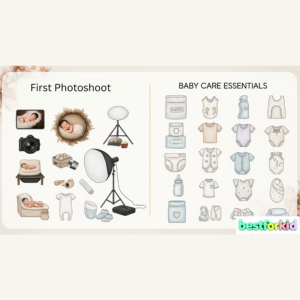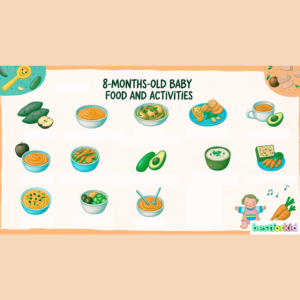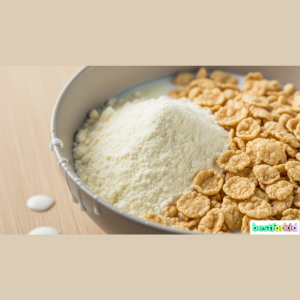
Welcome to the beautiful journey of parenthood! It is a path filled with incredible joy, precious moments, and, let’s be honest, a lot of questions. One of the biggest areas of concern for any new parent in India is nutrition. What should you feed your baby? When your little one takes their first sips beyond breast milk or embarks on the adventure of solid foods, you want to make the best possible choice. This comprehensive guide is here to walk you through selecting the best milk powder for your infant and choosing the right first cereals. Making informed decisions about your baby’s diet right from the start lays a strong foundation for their health, growth, and development. Therefore, let’s explore the world of infant nutrition together, ensuring your baby’s first sips and bites are both happy and healthy.
Why Choosing the Right Nutrition is Crucial for Your Baby
A baby’s first year is a period of astonishing growth. Their brain will double in size, their length will increase by about 50%, and their weight will nearly triple. This rapid development demands a huge amount of energy and a precise balance of nutrients. Every nutrient plays a vital role. Proteins are the building blocks for their growing body, fats like DHA are essential for brain development, and minerals like calcium and iron are critical for strong bones and healthy blood. While the World Health Organization (WHO) recommends exclusive breastfeeding for the first six months, this isn’t always possible for every mother.
In such situations, or when supplementing, infant formula becomes the primary source of nutrition. Choosing the best milk powder isn’t just about filling a tiny tummy; it’s about providing the fundamental components for a lifetime of good health. In India, the Food Safety and Standards Authority of India (FSSAI) sets specific regulations for infant food to ensure it is safe and nutritionally adequate for your child.
Understanding Infant Formula: Finding the Best Milk Powder
The aisle of baby food can be overwhelming, with countless tins and boxes all promising the best for your baby. Understanding the basics of what goes into these products can empower you to make a confident choice. Let’s break down the essentials of infant formula.
What is Infant Formula?
Infant formula is a carefully manufactured food designed to be a substitute for breast milk. Its composition is scientifically developed to mimic the nutritional profile of human milk as closely as possible. These formulas are not just powdered milk; they are complex blends of proteins, fats, carbohydrates, vitamins, and minerals. In India, all infant formulas must adhere to the strict guidelines laid out by the FSSAI, which dictates the permissible levels of each nutrient to ensure the product is safe and supports healthy infant growth.
Types of Baby Milk Powder Available in India
Not all babies are the same, and neither is all formula. Different types are available to suit various needs, ages, and dietary requirements.
Cow’s Milk-Based Formula
This is the most common type of infant formula you’ll find. The cow’s milk protein in these formulas is significantly altered to make it easier for a baby’s immature digestive system to handle. The two main proteins in milk, whey and casein, are often adjusted to a ratio that more closely resembles that of breast milk.
Lactose-Free Formula
Some infants may have difficulty digesting lactose, the natural sugar found in milk, a condition known as lactose intolerance. This can cause symptoms like gas, diarrhea, and stomach pain. Lactose-free formulas are designed for these babies, providing all the necessary nutrients without the lactose. Brands like Aptamil and Zerolac offer lactose-free options in India.
Soy-Based Formula
For infants who are allergic to cow’s milk protein, soy-based formulas can be a suitable alternative. These formulas use soy protein instead of milk protein. It’s an important option for families who wish to raise their baby on a vegetarian diet or for babies with specific medical conditions, but it’s always best to consult a pediatrician before choosing this type.
Hypoallergenic Formula
For babies with a high risk of allergies or who have a confirmed cow’s milk protein allergy, hypoallergenic formulas are recommended. In these formulas, the protein is extensively broken down (hydrolyzed) into very small particles, making them less likely to trigger an allergic reaction.
Follow-Up Formula (Staged Formulas)
As your baby grows, their nutritional needs change. Formula manufacturers cater to this with staged formulas:
- Stage 1 (0-6 months): Designed for newborns up to six months of age, this formula provides complete nutrition for the first half-year of life.
- Stage 2 (6-12 months): This is a follow-up formula for babies older than six months. It is designed to complement the introduction of solid foods and typically has higher levels of iron and other nutrients to support this new developmental stage.
- Stage 3 & 4 (Toddlers): For toddlers over 12 months, these formulas are designed as a nutritional supplement to a varied diet of solid foods.
Key Nutrients to Look for in the Best Milk Powder
When you turn a tin of formula around, the list of ingredients can look like a chemistry textbook. Here are the key players to look for:
- DHA and ARA: Docosahexaenoic acid (DHA) and Arachidonic acid (ARA) are omega-3 and omega-6 fatty acids, respectively. They are crucial for the development of your baby’s brain, eyes, and nervous system.
- Iron: Iron is vital for cognitive development and preventing iron-deficiency anemia, a condition that can impair growth. A baby’s natural iron stores start to deplete after six months, making it an essential nutrient in follow-up formulas and first foods.
- Calcium and Vitamin D: These two work together as the dream team for building strong bones and teeth. Vitamin D helps the body absorb calcium effectively.
- Prebiotics and Probiotics: These are added to some formulas to support digestive health. Prebiotics (like GOS and FOS) are fibers that feed the good bacteria in the gut, while probiotics are live beneficial bacteria. Together, they can help promote a healthy gut microbiome and support the immune system.
- Essential Vitamins and Minerals: A good formula will be fortified with a wide range of vitamins (A, C, E, K, B-complex) and minerals (Zinc, Selenium) to cover all of your baby’s nutritional bases.
Top Brands of Baby Milk Powder in India
Choosing a brand can be tough, but thankfully, several reputable international and Indian brands offer high-quality products. Always remember, the “best” brand is the one that suits your baby’s specific needs and is recommended by your pediatrician. Some of the most trusted brands in the Indian market include:
- Nestle: A globally recognized name, Nestle offers popular formulas like NAN PRO and LACTOGEN. NAN PRO is often noted for its whey protein base and the inclusion of probiotics.
- Aptamil: This brand is well-regarded for its research into infant nutrition and often includes a blend of prebiotics (GOS/FOS) in its formulas to support gut health.
- Similac: Similac offers a range of products, including formulas designed for different needs, and is known for its focus on nutrients that support brain development and immunity.
- Enfamil: Another leading brand, Enfamil provides formulas rich in DHA and often recommended by pediatricians for cognitive development.
- Dexolac: Dexolac is a well-known brand in India that provides formulas fortified with essential nutrients for healthy weight gain and bone development.
How to Prepare and Store Infant Formula Safely
Preparing your baby’s bottle is a daily ritual, and doing it safely is paramount to prevent infections. Your baby’s immune system is still developing, so hygiene is key.
Step-by-Step Preparation Guide
Following a consistent and hygienic process is crucial for your baby’s safety.
- Wash Your Hands: Before touching any feeding equipment, wash your hands thoroughly with soap and water.
- Sterilize Equipment: For babies under two months, premature babies, or those with a weakened immune system, it’s important to sanitize bottles and nipples before every use. You can do this by boiling them in water for five minutes or using a steam sterilizer.
- Boil the Water: Use fresh tap water or bottled water. Bring it to a rolling boil for at least one minute. Then, let it cool down. The water should be warm, not hot, to kill any potential bacteria in the formula powder without destroying the nutrients.
- Measure Accurately: First, pour the required amount of cooled, boiled water into the sterilized bottle. Then, add the exact number of scoops of powder as directed on the tin. Always use the scoop provided with that specific formula.
- Mix Well: Attach the nipple and cap, and shake the bottle well until the powder is completely dissolved.
- Check the Temperature: Before feeding your baby, always test the temperature of the formula by squirting a few drops on the inside of your wrist. It should feel lukewarm, not hot.
Important Safety Rules
- Check the Expiry Date: Never use formula from a container that is past its “use by” date or from a tin that is dented or damaged.
- No Microwaving: Never warm a bottle of formula in a microwave. Microwaves heat liquids unevenly, creating dangerous “hot spots” that can severely burn your baby’s mouth and throat. To warm a chilled bottle, place it in a bowl of warm water or hold it under warm running water.
- Use Promptly: Use prepared formula within two hours of making it. If your baby starts a bottle, it must be finished within one hour. The combination of formula and your baby’s saliva can cause bacteria to grow.
- Proper Storage: If you prepare a bottle and don’t plan to use it right away, you should immediately store it in the refrigerator and use it within 24 hours. Discard any unused, refrigerated formula after 24 hours.
Transitioning to Solids: The Next Big Step
Around the six-month mark, an exciting new chapter begins: introducing solid foods! This is often called complementary feeding because these new foods complement, rather than replace, breast milk or formula. For the entire first year, milk will remain your baby’s most important source of nutrition. Think of solids as a way to introduce new tastes, textures, and additional nutrients, and to help your baby develop the skills needed to eat like a grown-up.
When is Your Baby Ready for Solid Foods?
While many people focus on the 6-month milestone, it’s more important to look for your baby’s individual signs of developmental readiness. Every baby is different. Starting solids before your baby is ready can be ineffective and even unsafe.
Key Signs of Readiness
Your baby is likely ready to start solids when they can do all of the following:
- Sit Up with Support: They need to be able to sit in a high chair or on your lap and have good, steady control of their head and neck.
- Show Interest in Food: Does your baby watch you eat with fascination? Do they lean forward and try to grab food from your plate? This curiosity is a great sign.
- Diminished Tongue-Thrust Reflex: Newborns have a natural reflex that pushes objects out of their mouth with their tongue. This reflex needs to fade so they can swallow food instead of pushing it back out.
- Open Wide: They open their mouth when you offer them food on a spoon, showing they are ready and willing to try.
Common Misconceptions
Some parents mistakenly believe certain behaviors mean a baby is ready for solids. However, the following are generally not reliable signs:
- Chewing on their fists.
- Waking up more frequently in the middle of the night.
- Wanting extra milk feeds.
These behaviors are normal parts of development and do not necessarily mean your baby needs solid food.
Choosing the Best Cereal for Your Baby
When it comes to first foods, single-grain cereals are a popular and recommended starting point for many parents and pediatricians in India.
Why Start with Cereals?
Infant cereals are an ideal first food for several reasons. They are easy for a baby’s developing digestive system to handle. They have a smooth, simple texture that you can thin with breast milk or formula to a consistency your baby can manage. Importantly, commercial baby cereals are often fortified with iron, a critical nutrient that babies need from around six months of age.
Best First Cereals for Indian Babies
In India, you have several wonderful and nutritious options for your baby’s first cereal.
- Rice Cereal: This is often recommended as the very first food because it is a single grain and is considered the least allergenic of all grains. Its bland taste is also easy for a baby to accept.
- Ragi Cereal (Finger Millet): Ragi is a traditional powerhouse of nutrition in India. It is naturally rich in calcium and iron, making it an excellent choice for a growing baby.
- Oats Cereal: Single-grain oat cereal is another gentle option that is easy on the tummy and provides good fiber.
- Multi-grain Cereals: These should only be introduced after your baby has tried and tolerated several single-grain cereals separately.
Commercial vs. Homemade Baby Cereal
You can either buy ready-made baby cereal or prepare it at home.
- Commercial Cereals: These are convenient, quick to prepare, and have the significant advantage of being fortified with iron and other essential vitamins and minerals.
- Homemade Cereals: Making your own cereal is cost-effective and gives you complete control over the ingredients. A simple homemade rice cereal can be made by washing rice, drying it completely, roasting it lightly, and then grinding it into a fine powder. This powder can then be cooked with water to make a fresh porridge for each meal.
Introducing New Foods and Watching for Allergies
Introducing new foods is an exciting process of discovery for your baby. However, it’s important to do it methodically to monitor for any potential food allergies.
The “3 to 5 Day” Rule
The golden rule for introducing new foods is to offer only one new, single-ingredient food at a time and wait for three to five days before introducing another. For example, if you start with rice cereal, give only rice cereal for a few days. This waiting period gives you time to see if your baby has any adverse reactions, such as a rash, vomiting, or diarrhea. If a reaction occurs, you will know exactly which food caused it.
Common Food Allergies in India
While any food can potentially cause an allergy, some are more common than others. In India, the most frequent culprits include:
- Cow’s milk
- Eggs
- Wheat
- Soy
- Peanuts and some tree nuts
- Fish and shellfish
Interestingly, while nut allergies are very common in Western countries, they are reported less frequently in India.
Signs of an Allergic Reaction
It’s important to know the signs of a potential allergic reaction, which can range from mild to severe. Common signs include:
- Skin reactions: Hives, itchy red rashes, or eczema.
- Swelling: Swelling of the lips, tongue, or face.
- Digestive issues: Vomiting, diarrhea, or blood in the stool.
- Respiratory symptoms: Runny nose, sneezing, or difficulty breathing.
If you notice any of these signs, stop feeding the new food and consult your pediatrician immediately.
Building a Healthy Eating Foundation
Mealtimes are about more than just nutrition; they are about connection, exploration, and learning. Creating a positive and relaxed atmosphere around food can help your baby develop a healthy relationship with eating for life.
- Follow Your Baby’s Cues: Go at your baby’s pace. Let them show you when they are hungry and when they are full. If they turn their head away or close their mouth firmly, they have had enough.
- Never Force-Feed: Forcing a baby to eat can create negative associations with food and mealtimes. Trust their appetite.
- Embrace the Mess: Learning to eat is a messy business! Expect funny faces, spitting, and food everywhere. It’s all part of the process.
- Encourage Self-Feeding: As your baby’s fine motor skills develop, usually around 8 months, encourage them to self-feed with their hands. This helps develop independence and coordination.
Frequently Asked Questions (FAQ)
Which milk powder is best for a newborn (0-6 months)?
A Stage 1 infant formula is designed for newborns. Brands like Aptamil Stage 1, Nestle NAN Pro 1, and Enfamil A+ are popular choices. However, the absolute best choice is one that your pediatrician recommends based on your baby’s specific health needs.
Can I switch formula brands?
It is generally fine to switch between standard cow’s milk-based formulas. However, it’s best to do so gradually by mixing the old and new formula over a few days to help your baby’s digestive system adjust. If your baby is on a specialized formula (like hypoallergenic or lactose-free), you must consult your doctor before making any changes.
How do I know if my baby is allergic to formula?
Signs of a formula allergy (usually to cow’s milk protein) can include skin rashes like eczema, frequent vomiting, excessive gassiness or colic, diarrhea, or blood in the stool. If you suspect an allergy, speak to your pediatrician.
Should I add sugar or salt to my baby’s cereal?
No. You should never add sugar or salt to your baby’s food. Their kidneys are not mature enough to handle excess salt, and sugar can encourage a preference for overly sweet foods and contribute to tooth decay.
When can my baby start eating finger foods?
Babies are typically ready for soft, easy-to-dissolve finger foods when they can sit upright independently and have developed the “pincer grasp” (the ability to pick up small objects between their thumb and forefinger), usually between 7 and 10 months of age.
Is it okay to use regular cow’s milk instead of formula for a baby under one year?
No. Babies under 12 months should not be given regular cow’s milk as a main drink. It does not have the right balance of nutrients (like iron and vitamin C) for a growing infant and its high concentration of protein and minerals can be hard for their kidneys to process.
What is the best water to use for preparing formula?
You can use clean tap water or bottled water. Regardless of the source, it is recommended to bring the water to a rolling boil for one minute and then let it cool before mixing it with the formula powder. This ensures it is safe for your baby.
Conclusion
Choosing the best milk powder and first cereals for your baby is a significant milestone in your parenting journey. It’s a decision that blends science, intuition, and love. By understanding the different types of formulas, the key nutrients to look for, and the signs that your baby is ready for solids, you can navigate this phase with confidence. Remember to follow safety guidelines for preparation and storage meticulously. While this guide provides a wealth of information, the most important advice is to trust your instincts and always maintain open communication with your pediatrician. They are your best resource for personalized guidance. Every baby’s journey is unique. Enjoy these first sips and messy bites, knowing you are giving your child a wonderful and nutritious start in life. For more detailed information, you can also visit official government resources like RCH Portal, POSHAN Abhiyaan, and the National Health Mission Immunization Page.
You May Also Like
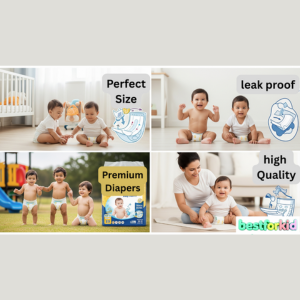
2025’s Best Baby Diapers in India Every Parent Should Know
Finding the right diaper can be a game-changer for both parents and babies. In this guide, we’ve rounded up the best baby diapers in India for 2025 that offer superior comfort, absorbency, and skin protection. Whether you’re looking for budget-friendly options or premium brands, this list helps you make the right choice for your little one’s needs.
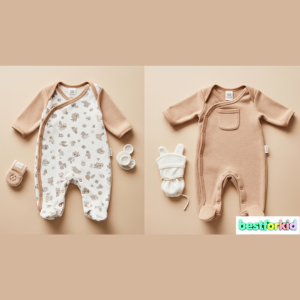
Newborn Clothing Made Easy: Comfort Meets Practicality
Dressing your newborn doesn’t have to be complicated. This guide simplifies your shopping by focusing on clothes that are soft, breathable, and easy to wear. Discover top picks for rompers, onesies, and sleepwear that combine comfort with convenience—perfect for your baby’s delicate skin and your daily routine.
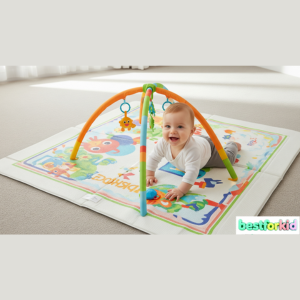
10 Best Baby Play Mats for Comfort, Safety & Entertainment
A good play mat offers more than just a soft surface—it encourages sensory development, tummy time, and safe play. We’ve curated the best baby play mats of 2025 that tick all the boxes: comfort, safety, durability, and design. Explore options that turn your floor into a fun and nurturing environment for your baby.

